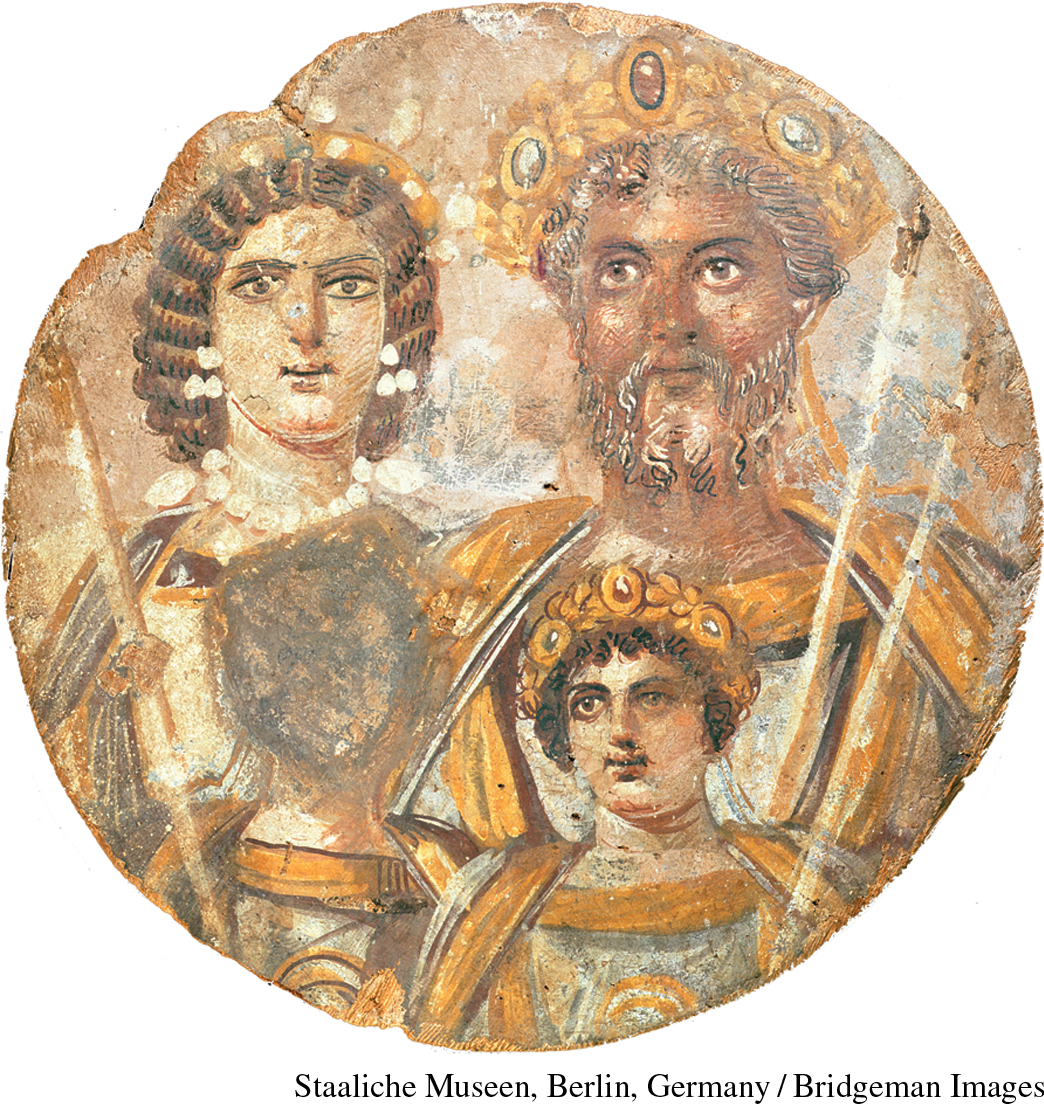Threats to the Northern and Eastern Frontiers of the Early Roman Empire
Threats to the Northern and Eastern Frontiers of the Early Roman Empire
Emperors since Domitian in the first century had combated invaders. The most aggressive attackers were the multiethnic bands from northern Europe that crossed the Danube and Rhine Rivers to raid Roman territory. These attacks perhaps resulted from pressure on the northerners caused by wars in central Asia that disrupted trade and the economy. These originally poorly organized northerners developed military discipline through their frequent fighting against the Roman army. They mounted especially damaging invasions during the reign of Marcus Aurelius (r. 161–180 C.E.). A major threat also appeared at the eastern edge of the empire, when a new Persian dynasty, the Sasanids, defeated the Parthian Empire and fought to re-create the ancient Persian Empire. By the early third century C.E., Persia’s renewed military power forced the Roman emperors to deploy a large part of the army to protect the rich eastern provinces, which took troops away from defense of the northern frontiers. The Atlantic Ocean on the west and the Sahara Desert to the south meant that threats to Roman territory were significantly less from those directions. (See Mapping the West: The Roman Empire in Crisis, 284 C.E.)

Recognizing the northern warriors’ bravery, the emperors had begun hiring them as auxiliary soldiers for the Roman army in the late first century C.E. and settling them on the frontiers as buffers against other invaders. By the early third century, the army had expanded to enroll perhaps as many as 450,000 troops (the size of the navy remains unknown). Training constantly, soldiers had to be able to carry forty-pound packs twenty miles in five hours, swimming rivers on the way. Since the early second century C.E., the emperors had built stone camps for permanent garrisons, but while on the march an army constructed a fortified camp every night. Soldiers transported all the makings of a wooden walled city everywhere they went. As one ancient commentator noted, “Infantrymen were little different from loaded pack mules.” At one temporary fort in a frontier area, archaeologists found a supply of a million iron nails—ten tons’ worth. The same encampment required seventeen miles of timber for its barracks’ walls. To outfit a single legion with tents required fifty-four thousand calves’ hides.
The increased demand for pay and supplies strained imperial finances. The army had become a source of negative instead of positive cash flow to the treasury, and the economy had not expanded to make up the difference. To make matters worse, inflation had driven up prices. The principate’s long period of peace promoted inflation by increasing demand for goods and services to a level that outstripped the supply.
In desperation, some emperors attempted to curb inflation by debasing imperial coinage. Debasement of coinage meant putting less precious metal in each coin and adding more metal of less worth without changing the coin’s face value. In this way, the emperors created more cash from the same amount of precious metal. But merchants soon raised prices to make up for the debased coinage’s reduced value; this in turn produced more inflation, causing prices to rise even more. Still, the soldiers demanded that their patrons, the emperors, pay them well. This pressure drove imperial finances into collapse by the 250s C.E. (See “Taking Measure: The Value of Roman Imperial Coinage, 27 B.C.E.–300 C.E.”)